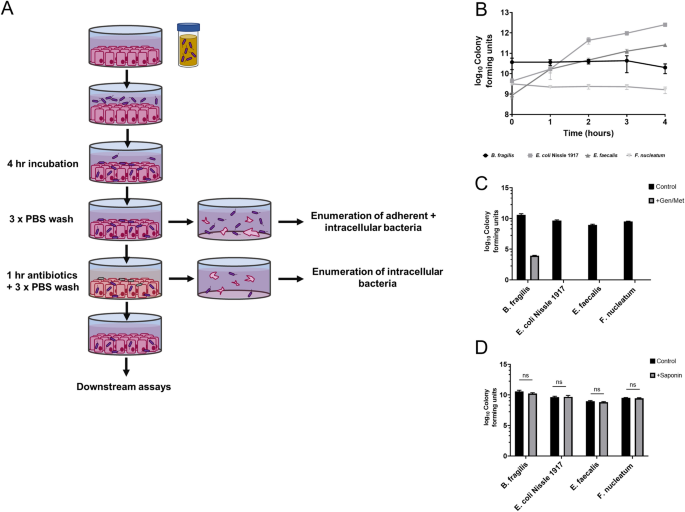💡 This study investigated the interactions between Colorectal cancer (CRC)-associated bacterial species (𝘌𝘯𝘵𝘦𝘳𝘰𝘵𝘰𝘹𝘪𝘨𝘦𝘯𝘪𝘤 𝘉𝘢𝘤𝘵𝘦𝘳𝘰𝘪𝘥𝘦𝘴 𝘧𝘳𝘢𝘨𝘪𝘭𝘪𝘴, 𝘌𝘯𝘵𝘦𝘳𝘰𝘤𝘰𝘤𝘤𝘶𝘴 𝘧𝘢𝘦𝘤𝘢𝘭𝘪𝘴, 𝘢𝘯𝘥 𝘍𝘶𝘴𝘰𝘣𝘢𝘤𝘵𝘦𝘳𝘪𝘶𝘮 𝘯𝘶𝘤𝘭𝘦𝘢𝘵𝘶𝘮) and a probiotic species (𝘌𝘴𝘤𝘩𝘦𝘳𝘪𝘤𝘩𝘪𝘢 𝘤𝘰𝘭𝘪 𝘕𝘪𝘴𝘴𝘭𝘦 1917) with benign (S/RG/C2) and malignant (HCT116) colorectal tumour cell lines.
📌 The results shed light on potential tumour cell-specific bacterial effects and their implications in CRC progression.
📍 Methods:
📌 Gentamicin protection assays to measure bacterial attachment and invasion to tumour cell monolayers.
📌 Cell culture conditions to assess bacterial persistence within tumour cells.
📌Biofilm assays to study the influence of mucin on bacterial phenotype.
📌Scratch assays and transwell filter assays to analyze tumour cell migration and invasion upon bacterial treatment.
📍 Key Findings:
📌 All CRC-associated bacterial species demonstrated higher attachment to benign tumour cells (S/RG/C2) compared to malignant tumour cells (HCT116).
📌 Invasion rates were higher in HCT116 cells, suggesting their predisposition to bacterial invasion.
📌 Bacterial species persisted within tumour cells for at least 48 hours post-infection, with greater persistence in malignant cells.
📌 Bacterial treatment significantly increased tumour cell yield in both benign and malignant cell lines.
📌𝘍. 𝘯𝘶𝘤𝘭𝘦𝘢𝘵𝘶𝘮 notably increased migration and invasion potential of malignant cells (HCT116).
📍 The study highlights varying interactions of CRC-associated bacteria with benign and malignant tumour cells. The differential effects on migration and invasion emphasize potential tumour cell-specific bacterial influences.
Link to the article : https://tinyurl.com/msnyjdp9
